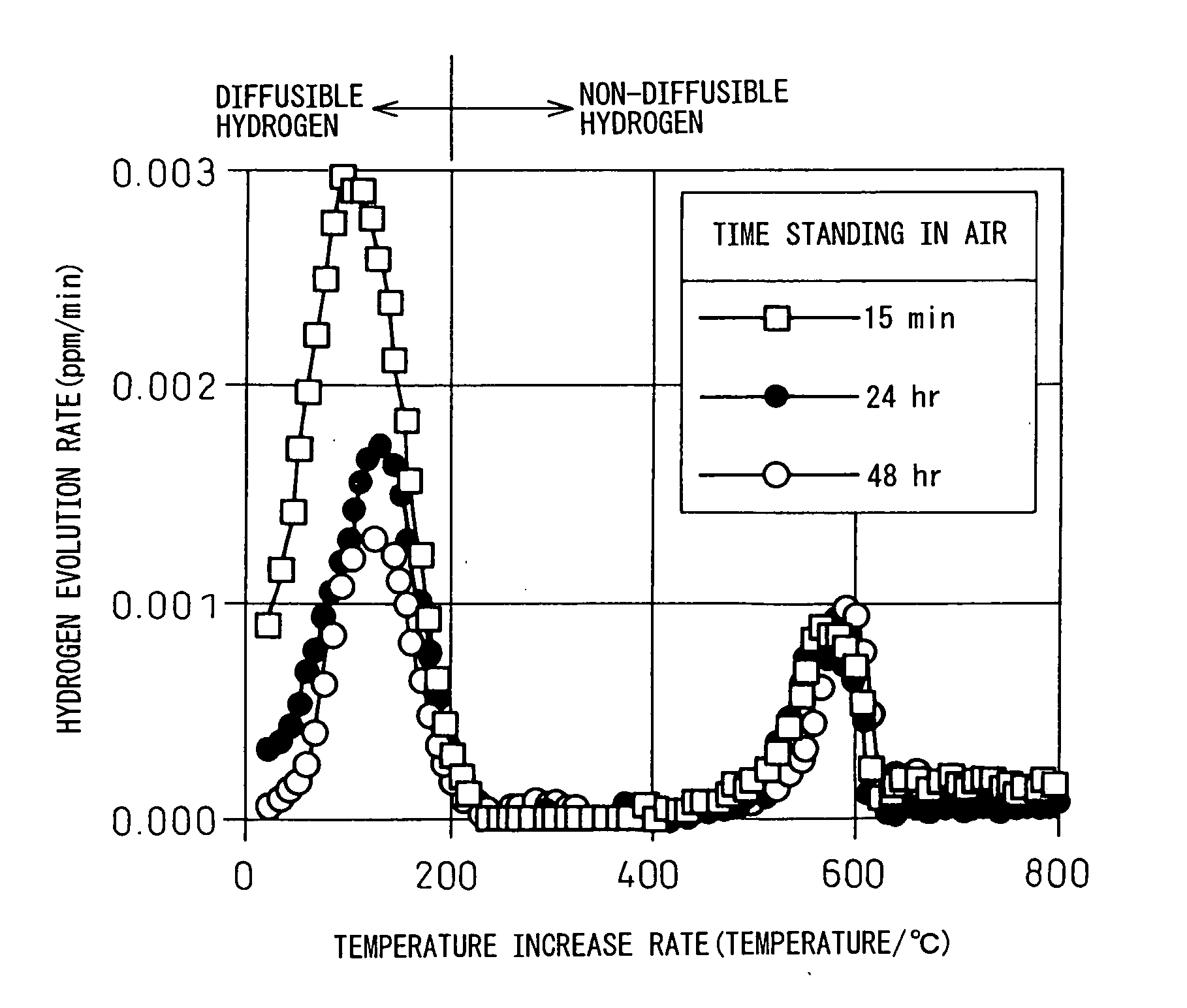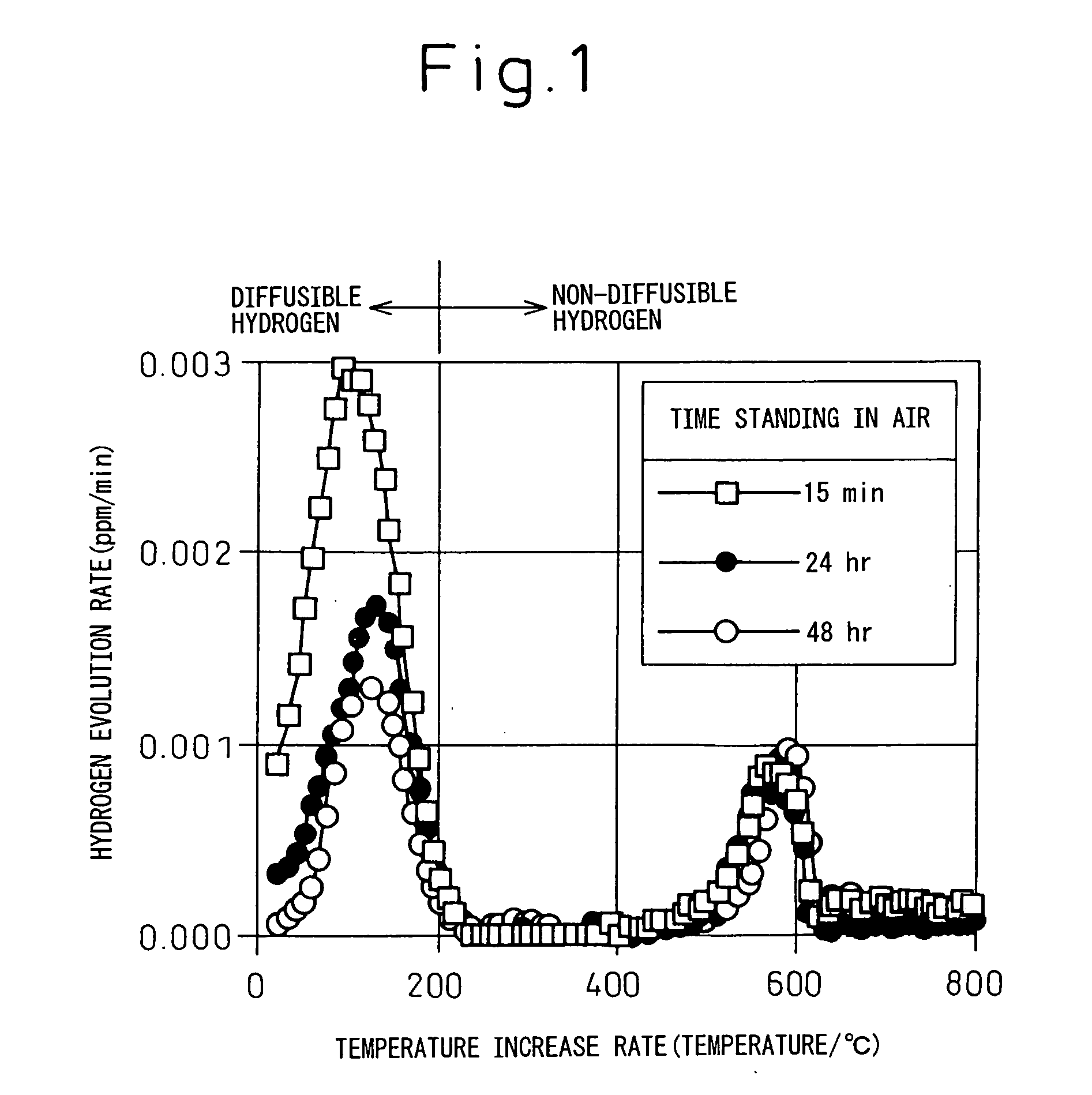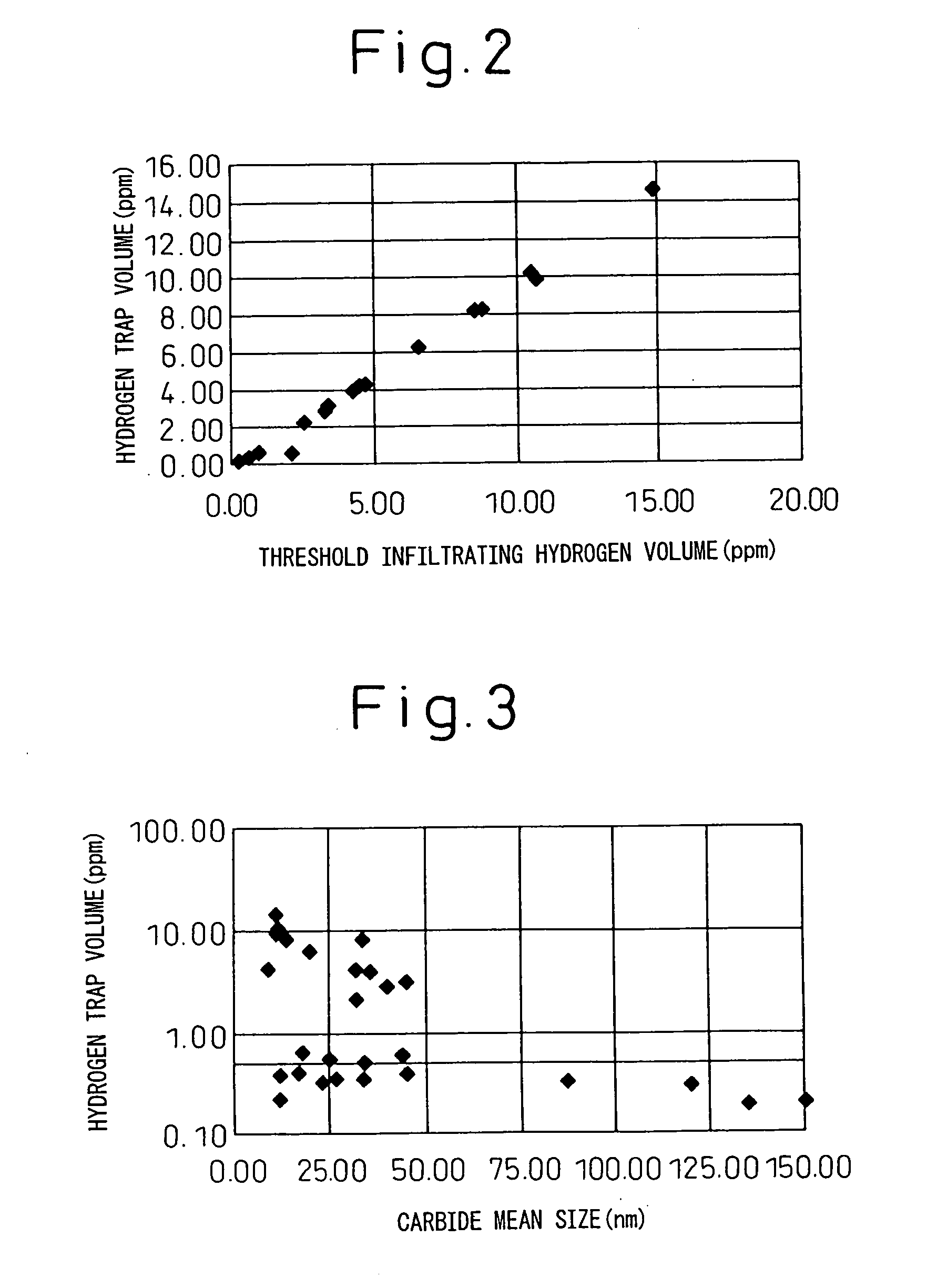High -Strength Steel Material With Excellent Hydrogen Embrittlement Resistance
a high-strength steel and hydrogen embrittlement technology, applied in the direction of solid-state diffusion coating, metallic material coating process, coating, etc., can solve the problems of increased production cost, delayed fracture, and no significant improvement in delayed fracture properties, so as to increase the threshold absorbed hydrogen concentration and improve the delay fracture resistance
- Summary
- Abstract
- Description
- Claims
- Application Information
AI Technical Summary
Benefits of technology
Problems solved by technology
Method used
Image
Examples
example 1
[0084] Test materials having the chemical compositions shown in Table 1 were heat treated under different conditions for transformation into martensite, tempered martensite, bainite, tempered bainite and perlite structures, and then the materials were heated to various temperatures. These test materials were used for evaluation of the mechanical properties, microstructure and delayed fracture properties, yielding the results shown in Table 2. Hydrogen charge was carried out by dipping in 1000 cc of a 20 wt % aqueous NH4SCN solution at 50° C. for 20 hours or longer, assuming hydrogen absorption by corrosion. The material was then held at room temperature for 100 hours for adequate release of diffusible hydrogen, and the remaining hydrogen concentration was evaluated as the trap hydrogen concentration.
TABLE 1wt %CSiMnVMoPSCrNiCuAlTiNbBN1Invention0.120.080.210.210.110.0090.0120.80——0.028———0.00320.601.980.800.30.100.0090.012———0.0350.025—0.00200.00530.551.500.550.250.230.0120.011———0...
example 2
[0087] Test materials having the chemical compositions shown in Table 3 were heat treated under different conditions for transformation into martensite, tempered martensite, bainite, tempered bainite and perlite structures, and then the materials were heated to various temperatures. These test materials were used for evaluation of the mechanical properties, microstructure and delayed fracture properties, yielding the results shown in Table 4. Hydrogen charge was carried out by dipping in 1000 cc of a 20 wt % aqueous NH4SCN solution at 50° C. for 20 hours or longer, assuming hydrogen absorption by corrosion. The material was then held at room temperature for 100 hours for adequate release of diffusible hydrogen, and the remaining hydrogen concentration was evaluated as the trap hydrogen concentration.
TABLE 3CSiMnVWPSCrNiCuMoAlTiNbBN28Invention0.600.080.790.110.100.0090.0120.00———0.0350.025—0.00200.005290.410.050.210.901.200.0070.0081.60—0.20——0.2300.010.00310.008300.550.750.540.250...
PUM
| Property | Measurement | Unit |
|---|---|---|
| Temperature | aaaaa | aaaaa |
| Temperature | aaaaa | aaaaa |
| Temperature | aaaaa | aaaaa |
Abstract
Description
Claims
Application Information
 Login to View More
Login to View More - R&D
- Intellectual Property
- Life Sciences
- Materials
- Tech Scout
- Unparalleled Data Quality
- Higher Quality Content
- 60% Fewer Hallucinations
Browse by: Latest US Patents, China's latest patents, Technical Efficacy Thesaurus, Application Domain, Technology Topic, Popular Technical Reports.
© 2025 PatSnap. All rights reserved.Legal|Privacy policy|Modern Slavery Act Transparency Statement|Sitemap|About US| Contact US: help@patsnap.com



